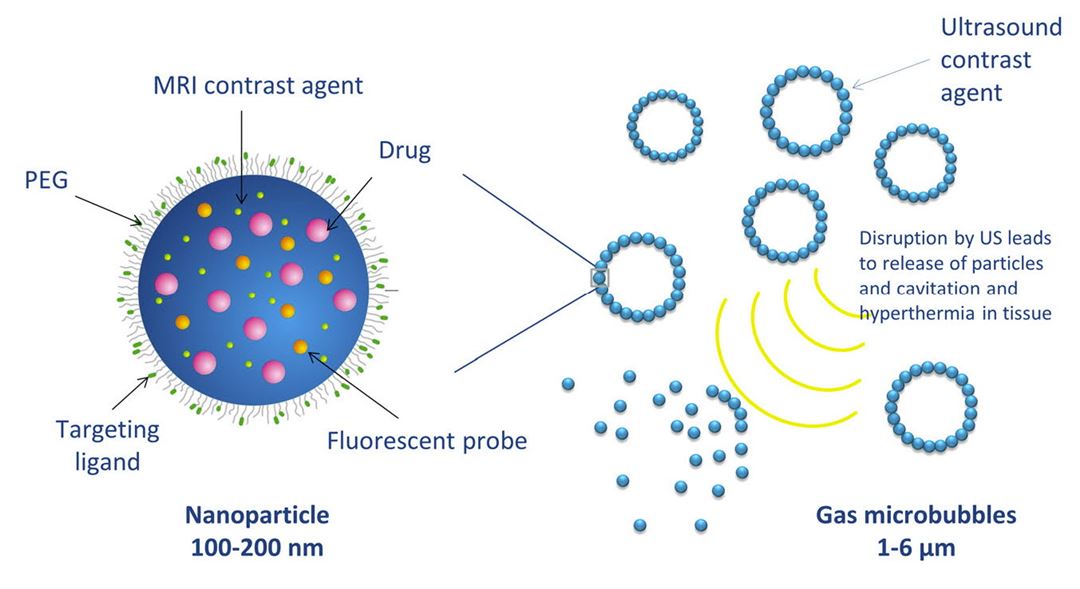In April 2015 we started the research project MULTIBUBBLE - Multifunctional microbubbles for improved image-based diagnosis and drug delivery, financed by the FRIPRO-program from The Research Council of Norway. In this project researchers from SINTEF will further develop and optimise multifunctional nanoparticles and microbubbles for early and robust diagnosis and targeted drug delivery. The nanoparticles form a stabilising shell around the microbubbles and can contain drugs, fluorescent dyes or contrast agents for MR or PET imaging. Furthermore, we will develop and test novel ultrasound imaging techniques and therapeutic use of ultrasound and microbubbles. Results from the project may benefit many groups of patients, e.g. those suffering from cancer and atherosclerosis.
Ultrasound is an excellent imaging technique used to visualise internal organs and large blood vessels, and it is commonly used in prenatal diagnosis. Small blood vessels and blood flow in the capillaries are hard to image using ordinary ultrasound imaging. However, when combining ultrasound and the injection of microbubbles into the blood stream even tiny blood vessels will become visible in the image.
Cancer is abnormal and uncontrolled cell growth, and can occur in any part of the human body. In the adult body, small microscopic tumours are highly prevalent, but the onset of blood vessel growth within such tumours is seen as a transition point from a dormant and harmless state to a fast growing tumour and potentially life threatening disease. In atherosclerosis as well, the growth of blood vessels within the plaque is an indication of a potential dangerous situation. The detection of this transition is important for early diagnosis. When new blood vessels are created, specific biomarkers will develop on the endothelial cells. We can image and monitor the development of diseases from an early stage by targeting these biomarkers with microbubbles, which simultaneously work as contrast agents for ultrasound, and can be loaded with drugs. In addition we can deliver drugs locally to the diseased tissue, hence reducing the risk of side effects.

